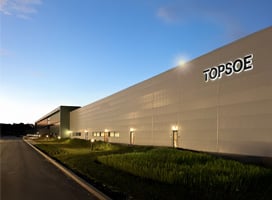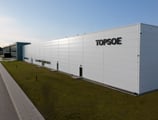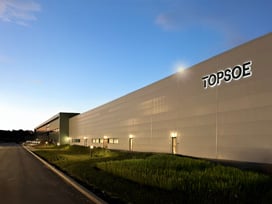Methanol synthesis catalyst
In the methanol business, a high on-stream factor, as well as carbon and energy efficiency, are critical to plant profitability. Our MK-151+ methanol synthesis catalyst delivers documented industry-leading performance and stability, resulting in production gains over the catalyst’s lifetime that will enable you to far exceed your initial target.
High and stable production rate
High performance over the long run is essential for profitable methanol production, and the MK-151+ is a proven performer. The technology gives the catalyst its unique catalytic activity and stability which results in higher methanol production rates and in significantly longer catalyst lifetimes compared with competing brands.
Low and stable pressure drop
The mechanical strength of methanol synthesis catalysts is one of the most important factors for a reliable and efficient performance of a methanol synthesis loop. A low mechanical strength of a catalyst can lead to rapid pressure drop increases, which can result in inefficient operation of the synthesis loop and even premature catalyst replacement. Strength measurements of spent samples of MK-151+ demonstrate that it is significantly stronger than competing brands, and with MK-151+ you can count on a low and stable pressure drop throughout the catalyst lifetime.
The technology prevents copper sintering
The basic principle of the technology is to stabilize the finely dispersed copper nanoparticles in the catalyst by creating a separation between them of multiple oxide particles. The technology creates a picket fence of metal oxide crystals that prevent sintering of the copper crystals, which ensures high stability of the active sites over the catalyst lifetime.
FAQ
What is the range of green methanol plant capacities, that Topsoe is working on?
Our MK catalyst has been operating in plants with a wide range of capacities- the biggest one being 4000 MTPD. On the other extreme of the scale, MK catalyst will also be installed soon in small modularized plants with capacities ranging between 50-100 MTPD. So, we cover the entire range.
What is the max CO2 partial pressure MK-317 can tolerate?
We have aged our catalyst with more than 10 bar CO2 PP. Considering the expected CO2 partial pressure in a CO2 to methanol loop, we believe we have covered the worst case scenario.
Why is catalyst strength a challenge for CO2 rich feedstock?
A CO2 rich environment can age a conventional methanol catalyst really fast, unless it is designed to counter that. The loss of strength is a part of the aging. Furthermore, most of the green methanol plants have a different and more dynamic operating mode, which is associated with numerous load fluctuations and pressure and temperature cycles. This can also have an influence on the catalyst stability and strength.
What is the expected lifetime of Topsoe’s MK catalyst?
A average lifetime of MK catalyst is around 4-5 years. We have multiple references where the MK catalyst has successfully operated for 8+ years. It is, however, important to note that lifetime is a function of different parameters, especially the poisons in the feedstock.
.png)









![SAF Airplane runway[1]-1 1](https://www.topsoe.com/hs-fs/hubfs/SAF%20Airplane%20runway%5B1%5D-1%201.png?width=800&height=640&name=SAF%20Airplane%20runway%5B1%5D-1%201.png)



